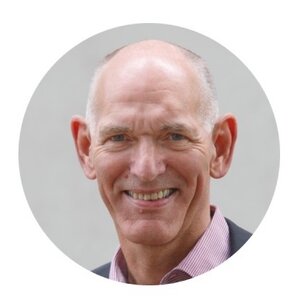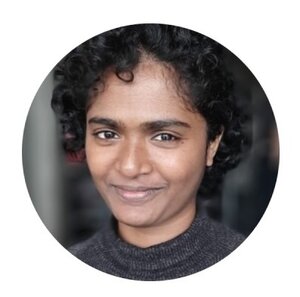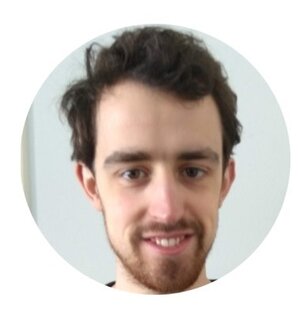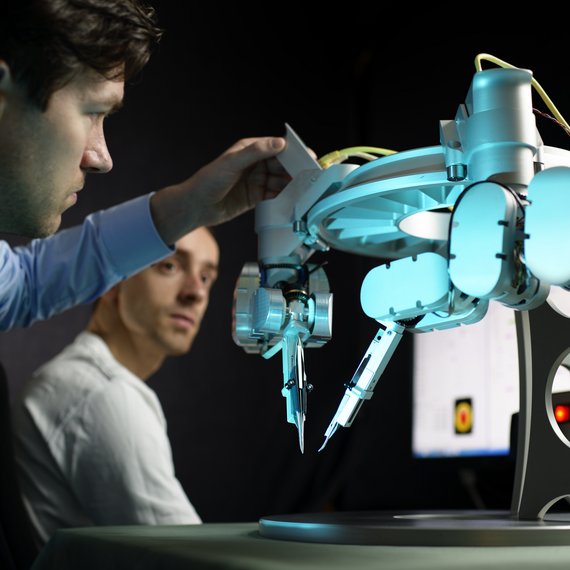Date
Tuesday October 11, 2022 from 2:30 PM to 6:30 PMLocation
TU/e campus, Luna Building, Corona HallAddress
De Lampendriessen 31Organizer
High Tech Systems CenterPrice
FreeBuilding
LunaStreamlining information flows in engineering
The demands on engineering environments are rapidly increasing. Digitization requires engineers to apply modeling techniques such that computers can optimally contribute to the engineering process. The models, documents and data form the information flows between engineers, tools and organizations that need to work seamlessly together. This interoperability requires these information flows to be managed properly.
The research meet gives an indication of where we are and what problems need to be addressed. These range from defining and managing shared vocabularies, combining models from various disciplines, standardizing exchange formats and more.
→ Add the meeting to your calendar
PROGRAM
14.30 - 14.45 Walk-in | ||
14.45 - 14.50 Opening by Marc Hamilton | HTSC Fellow | ||
14.50 - 15.30 Leo van Ruijven | CroonWolterDros | Standardization of Information Exchange | ||
15.30 - 16.00 Lasitha Chamari | PhD candidate at TU/e | Integration of time series data in BIM process | ||
16.00 - 16.15 Coffee/Tea break | ||
16.15 - 16.55 Bedir Tekinerdogan | Wageningen University [WUR] | Multi-Paradigm Modeling for Cyber Physical Systems | ||
16.55 - 17.25 Mark van der Pas | PhD candidate at TU/e | Various applications Semantic Web/Knowledge Graphs in industry | ||
17.25 - 17.30 Closing | ||
| 17.30 - 18.30 Networking drinks |

SPEAKERS & ABSTRACTS

Leo van Ruijven
The last 25 years for several major infrastructure projects in the Netherlands responsible for implementing Systems Engineering and setting up the supporting information management tools. Board member Dutch USPI (Extensive Cooperation Process Industry), a foundation whose mission is: "To develop, maintain and promote the use of international standards and best practices for product and plant life cycle information". Chairman NEN Standard Committee NC 381184 "Information integration and interoperability". This standard committee deals with all data standards in construction and industry in the Netherlands (including the BIM standards, STEP and ISO 15926). Member of ISO/TC 184/SC 4 “Industrial Data”. Founder and editor of ISO 15926 part 11: "Simplified usage or industrial usage or reference data" which combines semantic modelling technology with RDF(S). In 2015 published by ISO. Member of INCOSE (International Council of Systems Engineering), Member of SIG Systems Engineering in the Dutch construction sector. In this context, co-author of the article "Systems Engineering: Roles and Competences". PhD in 2018 at Delft University of Technology in the Netherlands: “A unified framework improving interoperability and symbiosis in the field of Systems Engineering”.
Title | Car Wash For Data
Best Practice for Information & Configuration Management of an industrial Facility. With respect to an industrial facility, Information Management (IM) and Configuration Management (CM) is important throughout its life cycle, but in practice appears to have insufficient maturity. Many organizations within the industry struggle with implementing a sound and integral Information and Configuration Management process. The design in general is fragmented and created using tools from different vendors, even by discipline, and the combination of lack of interoperability and lack of tooling supporting IM and CM wastes money, reduces plant efficiency hindered reuse of design knowledge and potentially even cause safety issues.
In the Netherlands, the Pallas organization is preparing the replacement of the ageing High Flux Reactor (HFR), producing medical isotopes in the Netherlands. This paper presents a pragmatic and proven implementation of an ontology in the Pallas nuclear facility that elegantly meets the needs of IM and CM with respect to the equilibrium triangle specified by the International Atomic Energy Agency (IAEA). This triangle in fact represents the Why, How and What of a nuclear facility and their mutual relations which ought to be always traceable, including all changes in these relations. In practice the mutual relations mentioned afore are blocked by interoperability barriers that mostly have an organizational, technological, and semantic nature.
As one of the key points, Pallas has opted for linked data, semantic modelling, and graph database technology to realize a Common Data Environment (CDE, as per ISO 19650). In this CDE all data obtained from the fragmented software tool set used over the life cycle of the facility is classified, harmonized, signed, and integrated. Based on international standards like ISO 15926 a knowledge-centric Integrated Information Model (IIM) was developed and leveraged as a modern and efficient approach to better support, manage and enable seamless sharing, transfer, and use of sustainable design knowledge and information within and across all facility life cycle phases.

Lasitha Chamari
Hello, I am Lasitha Chamari, a PhD candidate in the Information Systems in the Built Environment Group, Department of the Built Environment at the Eindhoven University of Technology. My PhD research is aligned with Brains4Buildings project’s Work Package 4, which develops data integration methods for smart communication in buildings. My ongoing research focuses on standardising the data and metadata of Building Management Systems (BMS), IoT devices and integrating this timeseries data with Building Information Models (BIM). I completed my master’s degree in Electrical Installations (University of Moratuwa) and bachelor’s degree in Electrical & Information Engineering (University of Ruhuna) in Sri Lanka. Then I worked in the AEC industry as an Electrical Engineer for four years. My goal is to make buildings smarter, specially by introducing solutions to overcome their data silos. ResearchGate: https://www.researchgate.net/profile/Lasitha-Chamari-2/research
Title | A standardized approach to integrating static and dynamic information systems in buildings
Information systems available in buildings are quite heterogeneous and traditionally remain isolated from one another. This is because the data they generate are heterogeneous, making available data, their formats, naming conventions and standards differ significantly among different systems. However, it is necessary to interpret information across multiple domains like BMS, BIM and IoT for making informed decisions on improving the performance of a building.
Knowledge graphs bring the ability to integrate heterogeneous information systems. But when static information systems such as Building Information Models (BIM) and dynamic systems like IoT meet, their integration is not straightforward. Therefore, such methods need to be developed to make standardized software applications that consume those static and dynamic data.
In this presentation, I will demonstrate how static and dynamic information systems can be integrated with the help of BIM standard IFC, ontologies in AEC and smart building domains, and state-of-the-art web technologies. Specifically, Linked Building Data (LBD), SOSA/SSN and Brick ontologies are used to create a semantic model. This way, real-time and historical timeseries data are easily linked with the BIM model and retrieved for further analysis and visualization. For visualising the BIM model in the web browser, xeokit graphics sdk is used. REST API and WebSocket are used when accessing historical and realtime sensor data from the web application.

Bedir Tekinerdogan
Prof.Dr. Bedir Tekinerdogan is full professor and chairholder of the Information Technology group at Wageningen University, The Netherlands. His current research at Wageningen University concerns smart system of systems engineering, with an emphasis on software engineering, artificial intelligence, and information technology. He has more than 25 years of experience in software and systems engineering. He is the author of more than 400 peer-reviewed scientific papers and 6 edited books. He has been active in dozens of national and international research and consultancy projects with various large software companies, whereby he has worked as a principal researcher and leading software/system architect in different domains such as enterprise systems, automotive systems, critical infrastructures, cyber-physical systems, satellite systems, defense systems, command and control systems, and precision farming. He has developed and taught around 20 different academic software/systems engineering courses to more than 50 companies in The Netherlands, Germany, India, and Turkey. For more information please check: https://www.linkedin.com/in/bedir/
Title | Architecting Cyber-Physical System Of Systems
Whereas traditionally software systems were addressing a single domain, we can now observe the composition of multiple systems that are integrated in a coherent way, leading to Cyber-Physical System of Systems (CPSoS). This talk will focus on the architectural modeling of CPSoS. Currently, the software architect has already of a broad knowledge on software architecture design to support the development of systems that meet the stakeholder needs. However, these approaches did not explicitly consider the heterogeneity and the scale of CPS. The notion of multi-paradigm modeling for CPS will be discussed, together with the challenges for architecting CPSs and possible solution directions.

Mark van der Pas
Mark van der Pas is a Doctoral Candidate in the Department of Industrial Engineering at Eindhoven University of Technology (TU/e). His research focuses on applying Semantic Web Technologies and graph-based methods for data integration and analysis in manufacturing. Next to his PhD research he works at Semaku B.V., a small software/consultancy company specialized in data/information management and integration using Semantic Web Technologies and cloud services. Semaku works on solutions for integration of both engineering and operational data, mainly for customers from the semi-conductor industry. Next to those projects, Semaku is involved in EU’s H2020 project MAS4AI, which aims to apply knowledge representations in modular (multi-agent) production environments.
Title | Engineering interoperability and the semantic asset administration shell
Industry 4.0 is all about the next steps for digitization and automation in manufacturing. One of the concepts promoted around Industry 4.0 is the Asset Administration Shell (AAS) [1]. The AAS can be used for different purposes. From exchanging (static) information about an asset, which can be material (for example equipment and produced products) but also immaterial (for example software and production plans), to more advanced dynamic interaction between AASs. The main goal is to provide a standardized interface hiding technical implementation details.
Of specific interest for engineering interoperability is the asset life-cycle, which is embedded in the AAS concept. The AAS model distinguishes types and instances, corresponding to the life-cycle axis of RAMI 4.0 (Reference Architecture Model Industrie 4.0) [2]. The type AAS describes common information about an asset type/model, while the instance AAS relates to an asset instance (with a unique serial number).
The Semantic Web is a proven concept for sharing and integrating data from distributed sources at scale. Therefore, we think Industry 4.0 can benefit from the experience and developments in the Semantic Web community. One of the research topics in MAS4AI is therefore the alignment and integration of AASs with (existing) semantic models.
[1] https://www.plattform-i40.de/IP/Redaktion/EN/Standardartikel/specification-administrationshell.html
[2] https://www.isa.org/intech-home/2019/march-april/features/rami-4-0-reference-architectural-model-for-industr
